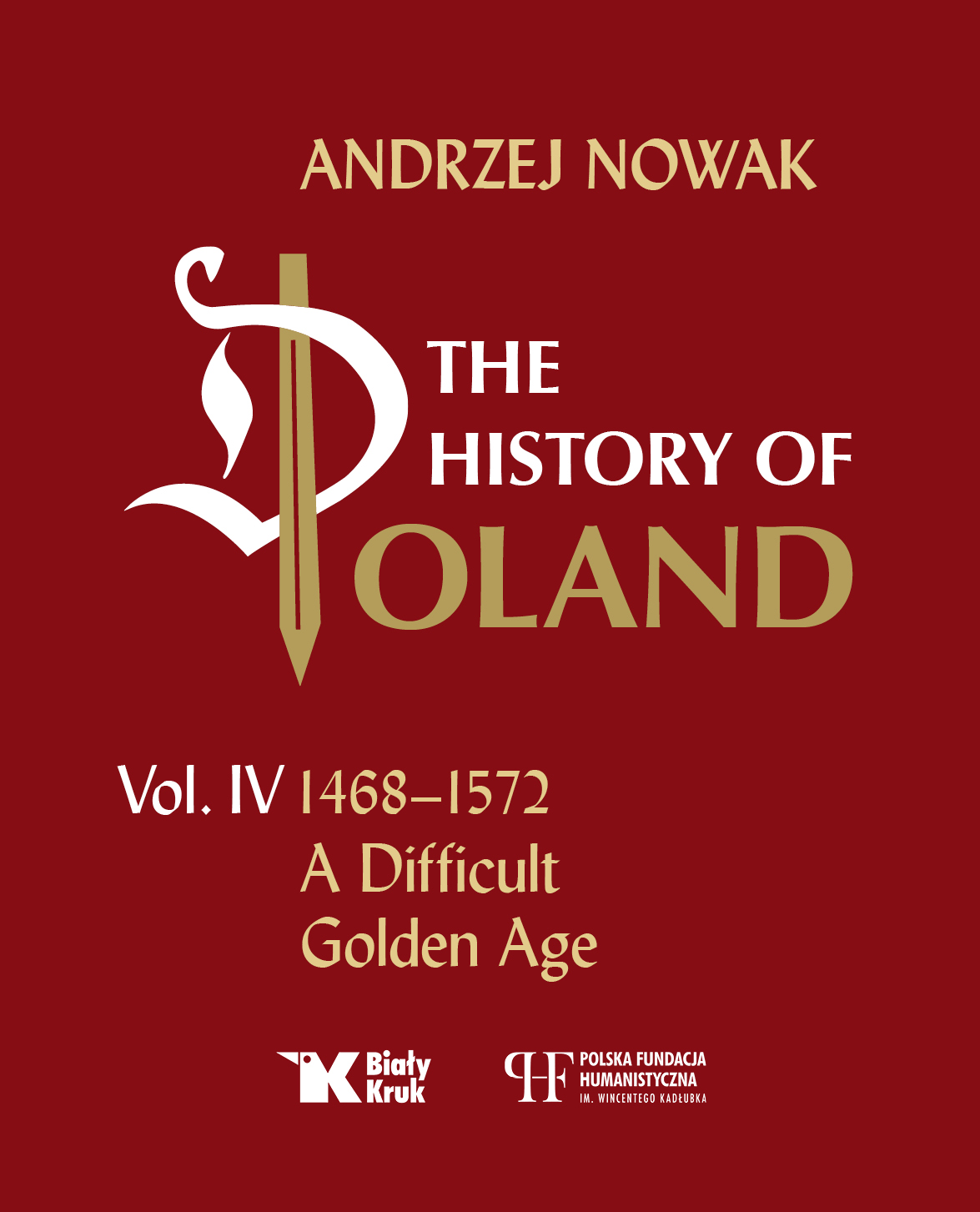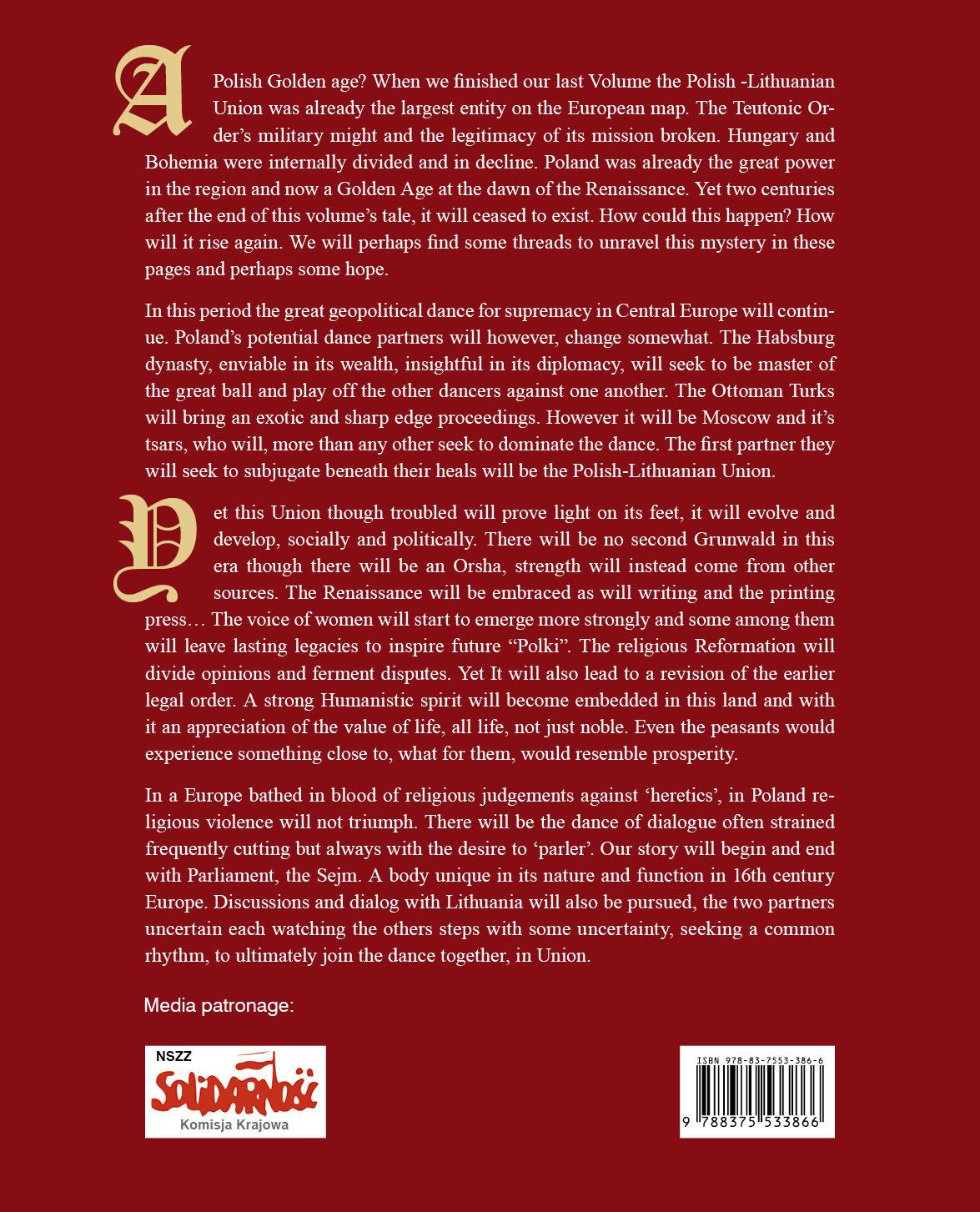The History of Poland - t. 4
Polish Golden age? When we finished our last Volume the Polish -Lithuanian Union was already the largest entity on the European map. The Teutonic Order’s military might and the legitimacy of its mission broken. Hungary and Bohemia were internally divided and in decline. Poland was already the great power in the region and now a Golden Age at the dawn of the Renaissance. Yet two centuries after the end of this volume’s tale, it will ceased to exist. How could this happen? How will it rise again. We will perhaps find some threads to unravel this mystery in these pages and perhaps some hope. In this period the great geopolitical dance for supremacy in Central Europe will contin#ue. Poland’s potential dance partners will however, change somewhat. The Habsburg dynasty, enviable in its wealth, insightful in its diplomacy, will seek to be master of the great ball and play off the other dancers against one another. The Ottoman Turks will bring an exotic and sharp edge proceedings. However it will be Moscow and it’s tsars, who will, more than any other seek to dominate the dance. The first partner they will seek to subjugate beneath their heals will be the Polish-Lithuanian Union.
Get this Union though troubled will prove light on its feet, it will evolve and develop, socially and politically. There will be no second Grunwald in this era though there will be an Orsha, strength will instead come from other sources. The Renaissance will be embraced as will writing and the printing press… The voice of women will start to emerge more strongly and some among them will leave lasting legacies to inspire future “Polki”. The religious Reformation will divide opinions and ferment disputes. Yet It will also lead to a revision of the earlier legal order. A strong Humanistic spirit will become embedded in this land and with it an appreciation of the value of life, all life, not just noble. Even the peasants would experience something close to, what for them, would resemble prosperity. In a Europe bathed in blood of religious judgements against ‘heretics’, in Poland re#ligious violence will not triumph. There will be the dance of dialogue often strained frequently cutting but always with the desire to ‘parler’. Our story will begin and end with Parliament, the Sejm. A body unique in its nature and function in 16th century Europe. Discussions and dialog with Lithuania will also be pursued, the two partners uncertain each watching the others steps with some uncertainty, seeking a common rhythm, to ultimately join the dance together, in Union.
476 pages, ISBN 978-83-7553-386-6

